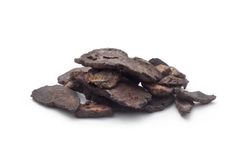
The Significant Effects of Cooked Rehmannia
The three-year-long COVID-19 pandemic has quietly come to an end. During the past three years, clinical treatments have found that traditional Chinese medicine (TCM) has shown good effects in the prevention and early treatment of COVID-19. In the post-pandemic era, some effective components in certain traditional Chinese herbs have also attracted our attention for their roles in immune regulation, improving spleen and stomach function, and enhancing bone health. In this series, we will explain the effective components of several commonly used Chinese herbs, their functions, and indications. In this issue, we will discuss Shu Di Huang (Cooked Rehmannia).
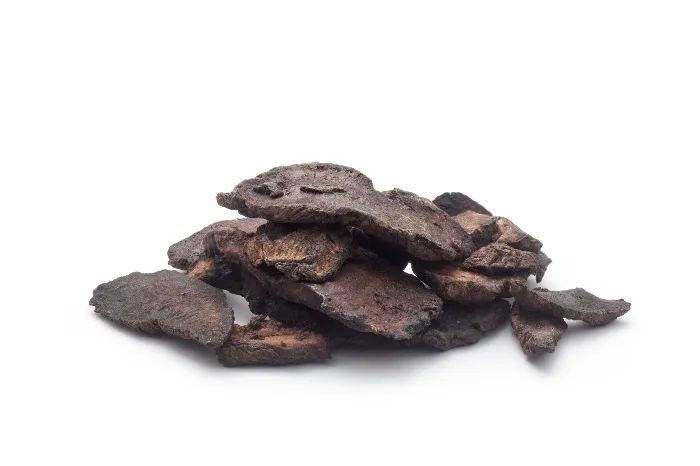
Figure 1: Cooked Rehmannia
Shu Di Huang is processed from the plant Rehmannia glutinosa of the Scrophulariaceae family. The processing methods mainly include the wine-stewing method and the steaming method. The wine-stewing method involves stewing fresh Rehmannia with yellow wine until the wine is absorbed, then drying it until the outer skin is slightly dry, and cutting it into thick slices or blocks for drying. The steaming process involves adding fresh Rehmannia and steaming until it becomes black and shiny, then drying it until about 80% dry, and cutting it into thick slices or blocks for drying. You may wonder why such processing is necessary. Can’t we use fresh Rehmannia directly? The answer is no! Modern TCM believes that: after steaming, Shu Di Huang changes from cold to warm in nature, from bitter to sweet in taste, and its function shifts from clearing to tonifying, thus nourishing yin, replenishing blood, and benefiting essence and filling marrow. Additionally, after being stewed in wine, it can enhance blood replenishment without being greasy!
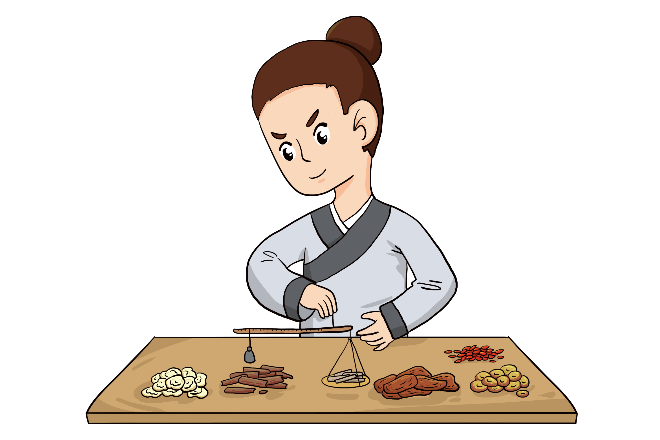
Figure 2: Ancient methods of processing Chinese herbs
So, what changes occur in the effective components of Shu Di Huang during the processing? To answer this question, we first need to know what the effective chemical components in Shu Di Huang are! After reviewing the literature, we found that the main chemical components in Shu Di Huang include iridoid glycosides, glycosides, anthraquinones, amino acids, and various trace elements. Among them, the most effective components are catalpol, 5-hydroxymethylfurfural, and Rehmannia polysaccharides, which show significant changes. For instance, the content of catalpol in fresh Rehmannia is 0.243%, in raw Rehmannia is 0.0531%, and in cooked Rehmannia is the lowest at 0.0257%; however, the average content of iso-catalpol in cooked Rehmannia is higher than that in raw Rehmannia. Catalpol and iso-catalpol have similar functions with no significant differences. Both exhibit neuroprotective and antioxidant stress functions. Another effective component, 5-hydroxymethylfurfural, has average amounts in Rehmannia as follows: cooked Rehmannia (0.0340%) > raw Rehmannia (0.0042%) > fresh Rehmannia (not detected); and with an increase in the number of steaming processes, the content of 5-hydroxymethylfurfural increases. Furthermore, the polysaccharide content of Shu Di Huang varies with different processing methods, with the polysaccharide content ranked from high to low as follows: nine steams and nine dries Shu Di Huang > modern processed Shu Di Huang (i.e., the aforementioned wine-stewing and steaming methods) > raw Rehmannia > nine steams and nine bakes Shu Di Huang. The above research data indicate that there is a dynamic balance among the effective components during the preparation of Rehmannia. Overall, processing enhances the efficacy of Rehmannia.
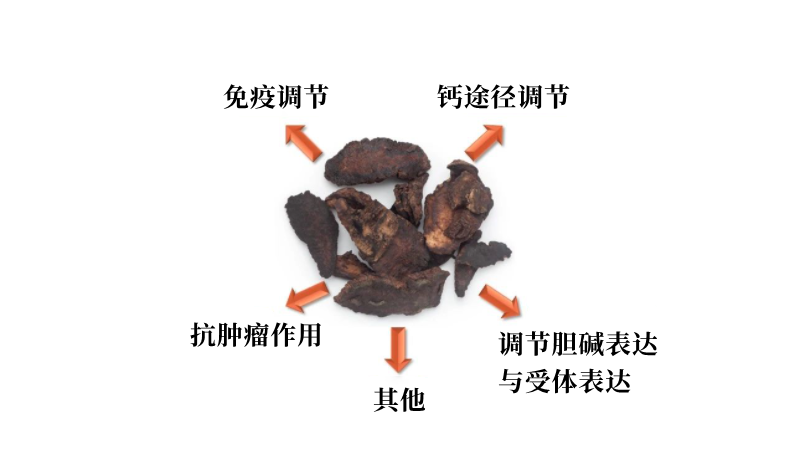
Figure 3: Functions of Cooked Rehmannia
Main Functions of Cooked Rehmannia
Part 1
Immune Regulation
Literature indicates that extracts of Shu Di Huang can activate helper T cells, promote the production of cytokines, and enhance antibody production. At the same time, it can improve the antigen-presenting cells’ ability to capture and present antigens, thereby promoting the activation of cytotoxic T lymphocytes. It can activate eosinophils, enhancing phagocytic function, thus boosting immunity. The effective component, Rehmannia polysaccharides, can induce the activation of dendritic cells (DCs) in humans and mice, leading to the production of interferon-gamma (IFN-γ) and tumor necrosis factor-alpha (TNF-α), activating immune responses.
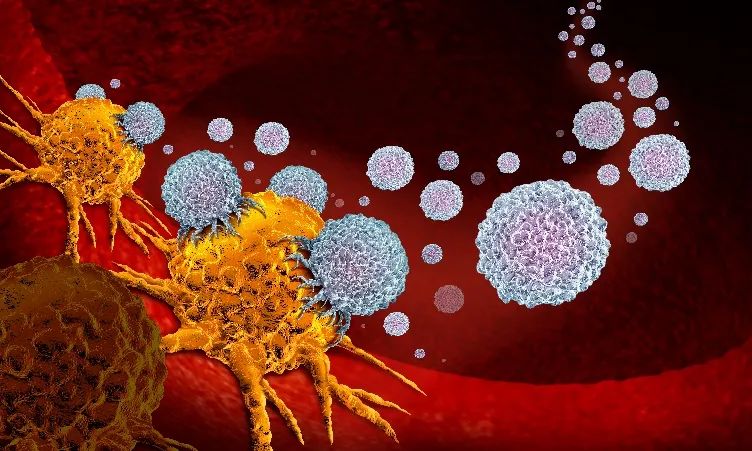
Figure 4: Diagram of anti-tumor cell attack
Part 2
Calcium Pathway Regulation
Shu Di Huang can improve the imbalance of intracellular calcium ions during cellular aging by antagonizing Ca2+, thus preventing calcium overload (a phenomenon where intracellular calcium concentration significantly increases, leading to cellular structural damage and metabolic dysfunction, known as calcium overload). At the same time, Shu Di Huang can reduce the activity of Ca2+-Mg2+-ATPase in ischemic brain tissue mitochondria, thereby reducing brain damage caused by ischemia and hypoxia. Why does inhibiting Ca2+-Mg2+-ATPase activity reduce brain damage caused by ischemia? The reason is that ischemia-induced hypoxia itself reduces the oxygen needed by the body’s “engine,” thereby decreasing the production of ATP, the “fuel” for brain cells. Therefore, reducing Ca2+-Mg2+-ATPase activity can decrease the demand for ATP by brain cells, thus reducing damage caused by hypoxia.
Part 3
Regulation of Choline Expression and Receptor Expression
Shu Di Huang can lower the content of aluminum ions in the brain, maintaining normal levels of gamma-aminobutyric acid (GABA) and glutamate (Glu) in the brain, thereby improving central cholinergic nervous system function. The 5-hydroxymethylfurfural in Shu Di Huang can regulate the expression of learning and memory-related proteins (P-synapsin I protein), which play an important role in the signal transduction pathways related to learning and memory.
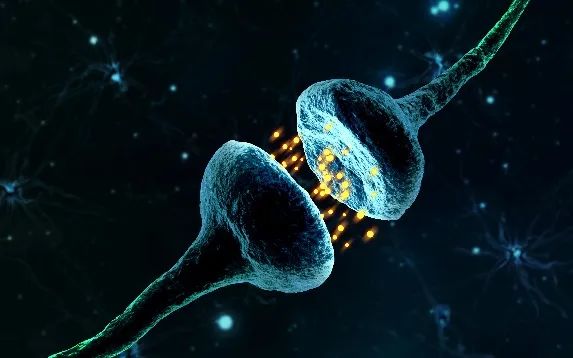
Figure 5: Neurotransmitter transmission in synapses
Part 4
Immune Regulation
5-Hydroxymethylfurfural in Shu Di Huang can shorten the cell cycle to some extent, accelerating the progression from G0/G1 phase to S phase, and can also inhibit the expression of cell cycle-dependent kinase (CDK) inhibitory genes P53, P21, and P16 in the CA1 region of the hippocampus, thereby slowing down the aging process of brain cells. Additionally, Rehmannia polysaccharides can inhibit the micronucleus rate, chromosome aberration rate, and sister chromatid exchange rate induced by cyclophosphamide in mice, thus exhibiting anti-tumor effects.
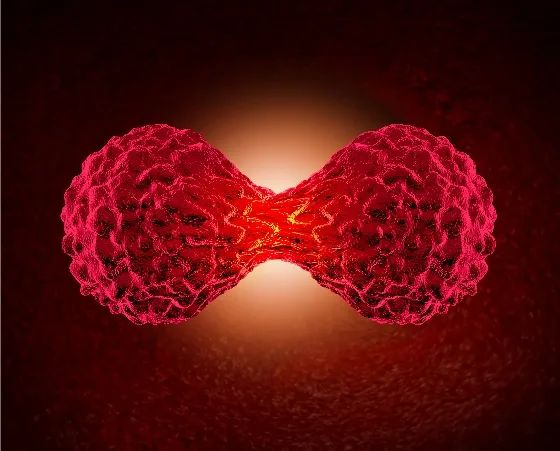
Figure 6: Diagram of cell division
Part 5
Other Effects
So, does Shu Di Huang have other effects? Existing studies have answered this question. Research indicates that the polysaccharides in Shu Di Huang can exhibit anti-anxiety and anti-fatigue effects. The mechanism may involve inhibiting the downregulation of beta-synuclein, peroxiredoxin-2, etc., in the hippocampus of mice in a model of obesity induced by monosodium glutamate (MSG), thereby increasing liver glycogen reserves.
Conclusion
In summary, Shu Di Huang can “nourish blood and benefit qi,” enhancing self-immune function, improving calcium ion balance, and brain function to some extent, slowing down brain cell aging, and exhibiting certain anti-tumor and anti-fatigue activities. It can be used to treat symptoms such as yin deficiency with blood deficiency, weakness of the waist and knees, fatigue with bone steaming, nocturnal emissions, menorrhagia, irregular menstruation, tinnitus, and blurred vision, making it a rare and valuable medicine!
References:
1. Zhang Liping, Li, Zhang Zhenling, et al. Historical evolution of the processing methods of Shu Di Huang. Journal of Henan University of Traditional Chinese Medicine, 2005(02):69-71.
2. Ji SL, Cao KK, Zhao XX, et al. Antioxidant activity of phenylethanoid glycosides on glutamate-induced neurotoxicity. Biosci Biotechnol Biochem. Nov 2019;83(11):2016-2026.
3. Yan Feixia, Xie, Chen Chang, et al. Research progress on the changes in chemical components and pharmacological effects during the processing of Shu Di Huang. Journal of Traditional Chinese Medicine, 2021,32(10):2493-2495.
4. Zheng Xiaoke, Hou, Duan Pengfei, Feng Zhiyi, Wang Xiaolan, Zhang Yanli, Feng Weisheng. Experimental study on the immune regulatory effects of Shu Di Huang extracts in vitro. Chinese Pharmaceutical Journal, 2012,47(24):1995-2000.
5. Kwak M, Yu K, Lee PC, Jin JO. Rehmannia glutinosa polysaccharide functions as a mucosal adjuvant to induce dendritic cell activation in mediastinal lymph node. Int J Biol Macromol. Dec 2018;120(Pt B):1618-1623.
6. Chen Siqi, Li, Wu Xinyu, et al. Research progress on the pharmacology of Shu Di Huang. Chemical Engineer, 2019,33(11):46-50.
7. Shen Yunhui, Cao, Cui Ying, Hou Shiliang. Effects and mechanisms of Shu Di Huang on memory in a model of dementia in mice. Shanghai Journal of Traditional Chinese Medicine, 2007(04):67-68.
8. Li Pengfei, Miao. Analysis of the current status of modern research and application of Shu Di Huang. Journal of Traditional Chinese Medicine, 2014,29(02):252-254.
9. Wang Zhijiang, Wei, Ma Siti. Research progress on the chemical and pharmacological effects of Rehmannia polysaccharides. Chinese Journal of Experimental Formulas, 2015,21(16):231-235.



